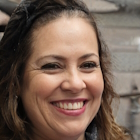AGCO Tightens Claiming Rules to Protect Standardbred Horses and Claimants
Ontario’s gambling regulator has expanded protections for racehorses and claimants in Standardbred claiming races.

New rules add mandatory veterinary checks and stricter grounds for voiding claims.
The Alcohol and Gaming Commission of Ontario (AGCO) has announced a suite of regulatory changes to the Standardbred Rules of Racing that take effect on February 2, 2026. The revisions increase veterinary oversight before and after claiming races, broaden the circumstances under which a claim may be voided, and require individual tracks to adopt complementary local rules approved by the AGCO.
Under the new framework, all claimed horses will be automatically enrolled in a post-race Observation Period. Commission or Official Veterinarians will observe horses walking after a race and may perform a brief physical examination. The observation must begin at least 30 minutes after the claiming race, and trainers or their representatives are required to take the horse directly to the designated observation area and remain for the duration. Failure to comply can lead to monetary penalties.
Claimants will retain the right to opt out of the Observation Period directly on the claim slip, but doing so removes the enhanced protection that allows a claim to be overturned on veterinary grounds. If a claimant requests a ruling to invalidate a claim during the Observation Period, a Race Official may declare the claim invalid if a veterinarian places the horse on the Veterinarians’ List, detects bleeding from the nostrils, determines the horse suffered an injury requiring euthanasia, or if the horse dies.
The rules also mandate a standardized pre-race warm-up assessment. Horses must complete a mandatory one-lap warm-up on the same racing surface unless excused by the Judges. If a warm-up is waived, the Judges may direct an Official or Commission Veterinarian to conduct a pre-race examination to assess movement and identify signs of potential medical concern.
When a claim is ruled invalid, the horse must be returned to its original owner “in the same material condition” as at the time it was claimed, consistent with the updated provisions in Standardbred Chapter 15. Track-specific rules will determine operational details such as the exact location of the observation area and how the observation is scheduled during a race card.
The AGCO says the changes align Standardbred regulations with earlier amendments made to the Thoroughbred Rules of Racing and follow extensive industry consultations. After observing the impact of similar changes in Thoroughbred racing for a year, the AGCO has also finalized minor procedural tweaks to the Thoroughbred claiming rules to clarify timing and administration of the Observation Period.
More Regulation News
 Regulation
Regulation
Mexico Suspends 13 Casinos Citing International Money-Laundering Allegations
Nov 13, 2025What Trainers and Claimants Need to Know
Trainers, owners and claimants should expect racetracks to publish updated local rules describing how the Observation Period will operate at each facility. The AGCO requires these track rules to be submitted and approved in advance of the February implementation date.
Industry reaction is mixed but generally supportive. "These measures strengthen transparency and protect the wellbeing of horses while providing claimants with clearer recourse if a transferred horse is subsequently found to have serious issues", said Dr. Martin Hayes, an equine veterinarian with two decades of experience in racing jurisdictions. "The 30-minute observation window and the requirement to return horses in the same condition give both animal welfare and consumer protection more teeth."
AGCO officials framed the revisions as part of a broader drive to raise standards across Ontario racing.
We consulted widely with tracks, veterinarians and industry stakeholders to craft rules that balance the need for timely ownership transfers with robust veterinary oversight. Our objective is to protect claimants’ investments and ensure horses are fit to continue racing after ownership changes."
Practical implications include a likely lengthening of post-race timelines for claimed horses and increased on-course veterinary resources. Tracks will need to designate observation areas, manage claimant opt-outs at the point of sale, and enforce trainer attendance. For claimants who waive observation, the AGCO warns they forfeit the right to seek invalidation on the expanded veterinary grounds.
For trainers and industry participants, the key actions before February 2, 2026, are to review updated track rules when published, ensure staff and representatives understand observation procedures, and anticipate closer veterinary scrutiny during warm-ups and after claiming races. The AGCO has emphasized that these changes are intended to position Ontario as a leading Canadian jurisdiction for equine welfare and consumer protection in claiming races.
RELATED TOPICS: Regulation
Most Read
$3.85M Table-Game Jackpot Hits the Venetian – Millionaire Progressive Pays $3,845,727
Nov 07, 2025Must Read
 Interviews
Interviews







Review this New Post
Leave a Comment
User Comments
Comments for AGCO Tightens Claiming Rules to Protect Standardbred Horses and Claimants